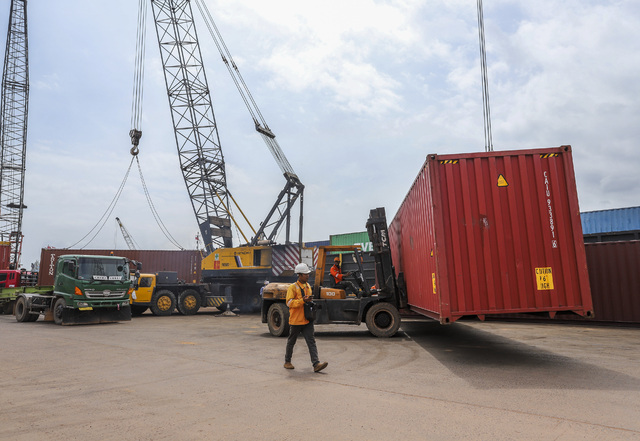 Making Indonesia 4.0 by Building a Smart Logistics EcosystemLogistics forms the lifeblood of Indonesia’s value chains. Without it, trade and commerce would be at a standstill as businesses depend heavily on logistics infrastructure to ensure their products reach their customers. However, the Covid-19 pandemic has caused profound disruptions to Indonesia’s logistics during a time when unfettered supply chain movement is crucial in keeping societies and economies going during the ongoing crisis.
Making Indonesia 4.0 by Building a Smart Logistics EcosystemLogistics forms the lifeblood of Indonesia’s value chains. Without it, trade and commerce would be at a standstill as businesses depend heavily on logistics infrastructure to ensure their products reach their customers. However, the Covid-19 pandemic has caused profound disruptions to Indonesia’s logistics during a time when unfettered supply chain movement is crucial in keeping societies and economies going during the ongoing crisis.The Rise of Indonesian Logistics
Indonesia is Southeast Asia’s largest economy but one that is also highly fragmented due to its unique archipelagic geography of some 17,000 islands. As such, logistics operators in the country must operate in a complex multimodal system (comprising land and sea freight) to transport goods across the country’s various provinces.
This means that resource and time efficiency has been a key ecosystem challenge. Yet now, more than ever, these efficiencies are required to restimulate economic sectors that work in tandem with logistics actors. While B2C and C2C economic sectors such as e-commerce experienced a renaissance during the pandemic, they were not enough to sustain the sector at large due to disruptions in more physical industries such as mining and agriculture.
Hence, the logistics industry must transform its operations to help stimulate sectors – both digital and physical – to operate with greater supply chain efficiency and productivity. This requires digitization to take a stronger root between the ecosystem’s key actors – namely transporters, warehouses, and businesses – by leveraging more sophisticated technologies.
Smarter Transporters
Indonesian logistics companies needed to navigate an often opaque and unreliable national supply chain network underpinned by underdeveloped infrastructure and low technological adoption in the domestic industry. For example, truck fleet operators still must go through many processes such as matching of orders and verification of deliveries manually, or through ad hoc channels such as WhatsApp. Such limitations add more layers of complexity for transporters when navigating logistical environments. One solution to help them mitigate these issues is via better operational streamlining and transparency through a transportation management system (TMS).
A TMS is essentially, a software that helps companies plan their logistics process including facilitating the movement of goods, as well as optimizing resources, to ensure timelier freights. It effectively helps transporters unravel the intricate web of the supply chain network to fulfil deliveries in ways that not only drive up the satisfaction of customers – both end consumers’ and the businesses that contract their service. By combining a TMS with more advanced technology such as Internet of things (IoT) and artificial intelligence, we are able to have access to more detailed data insights and analysis. For instance, weight sensors can be used to detect and alert transporters when there are sudden changes to the load to prevent theft. Another example is an AI routing engine which can automatically route trucks to optimize the delivery process, depending on their load’s weight and operating hours of the roads in real-time.
https://www.civilengineering.ai/making-indonesia-4-0-by-building-a-smart-logistics-ecosystem/

Post a Comment